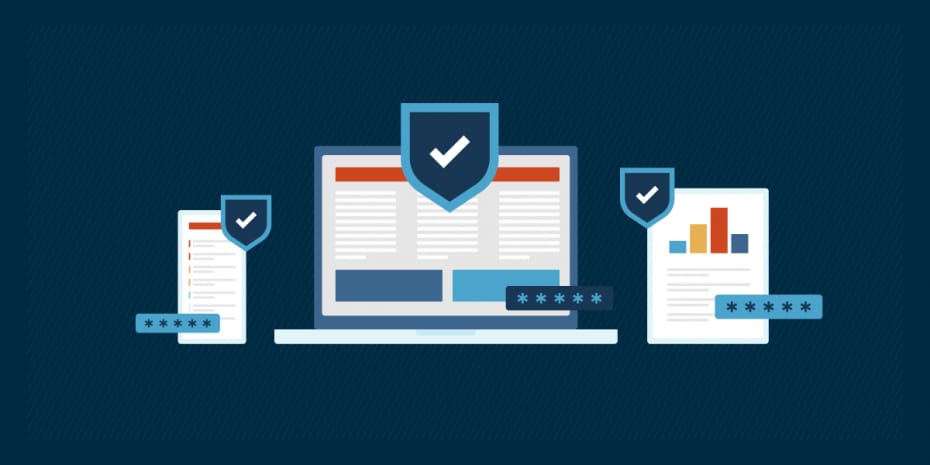Penetration Testing — also known as “pentesting” — are used by cybersecurity professionals and managed service providers to identify vulnerabilities present in a system before a cybersecurity incident takes place. You will often come across clients asking you to perform penetration testing, especially as emerging government regulations begin to make the practice mandatory.
Penetration testing is an intricate specialization that’s critical to the effective overall delivery of cybersecurity and compliance services. Even MSPs who do not carry out their own pen testing will most likely partner with another provider who can ensure this valued service is available to their clients.
What is penetration testing (pen testing)?
The penetration testing method evaluates, measures, and improves the security posture of an organization’s networks and systems by confronting them with the same tactics and techniques that a hacker would use.
Pen tests allow organizations to test their IT systems, networks, and web applications for potential security vulnerabilities that could be exploited by a malicious actor. Penetration testers are tasked with gathering key information about the system they’re evaluating. They must identify potential entry points and will simulate an attack to better understand existing vulnerability to threats like malware and ransomware.
Penetration testing is part of, and sometimes packaged with, other key audits that cover security policies, compliance with data and privacy regulation requirements, monitoring, and response/remediation planning.
Benefits of penetration testing and why pen testing is needed
The information learned through a penetration test helps IT managers understand their security weaknesses and make strategic decisions to mitigate them. A pen test report provides an organization with insight into how to prioritize its cybersecurity strategy and properly layer various tools and techniques to gain optimal coverage.
Pen tests also challenge an organization’s incident response capabilities in terms of how prepared they are to respond to a real attack. Practice makes perfect, as they say, and regular pen testing will help an organization or IT security team maintain a state of readiness.
What are the types of penetration testing?
There are three methods of simulating cyberattacks for a penetration test:
Black Box
A black-box assessment is usually carried out during the initial phase of a penetration test. The pen tester — acting as a malevolent hacker — is given no information about the internal workings or architecture of the target system. Their job is to breach the system armed with only an outsider’s knowledge.
As you would imagine, this is to simulate the real-world risk of an outside threat mapping the system and looking for any vulnerabilities.
Gray Box
The next level of the test simulates an attack by a threat who has at least some knowledge of the internal security system. Gray-box testers usually assume the role of someone with access and privileges within a system. They are provided basic information regarding the target system’s architecture and protections.
This approach garners a more deliberate and targeted assessment of the security of a network. In black-box tests, the tester will spend a lot of time just searching for vulnerabilities. A gray-box test simulates an attack wherein the threat knows what they’re looking for and has some idea of where to access it.
White Box
Also known as “logic-driven testing,” “auxiliary testing,” “open-box testing,” and “clear-box testing”, white-box simulates a situation where hackers have total access to all source code and architecture documentation. The pen tester can sift through every bit of code and documentation to find vulnerabilities, allowing them to work at the level of the software or network developer.
While this is time-consuming, it is also the most thorough form of penetration testing, capable of exposing both internal and external vulnerabilities.
Categories of penetration testing
As you can see, not all penetration testing is carried out in the same way. Beyond the three types of pen testing, there are at least five general pen testing services that IT professionals will typically offer:
External testing
An external penetration test targets easily visible assets — think websites, web applications, domain name servers (DNS), and email accounts. These tests are used to determine if outside attackers can use external systems to gain access to the network or data.
Internal testing
Internal penetration tests simulate an attack by a malicious insider rather than an outside threat. This is done to expose vulnerabilities that could be exploited by someone with access behind the organization’s firewall. Employee vulnerability to social engineering or phishing is sometimes tested here.
Blind testing
How vulnerable is a system to a hacker with very limited information? In a blind pen test, only publicly accessible information is used to gain access to a system. While the penetration tester is ‘flying blind’ in such a test, the target is told what the white hat hacker will attack, how they’ll attack, and when.
Double-blind testing
In a double-blind penetration test, neither the pen tester nor the target is informed of the scope of the simulated attack. The target has no advance knowledge of the nature of the attack, meaning they have no time to prepare and skew the results of the test. Vulnerabilities are more reliably exposed using this method, as the security plan is pushed to its practical limits in a more realistic way.
Targeted testing
Targeted testing is a collaborative effort in which the hacker and defenders keep each other apprised of their actions. By ‘gaming’ an attack in real-time, both the pen testers and target organization gain valuable insight into the best information security strategies to implement.
Phases or stages of penetration testing
Penetration tests are typically carried out in five stages:
- Planning. This is the information-gathering and preparation stage of the test. Testers will begin by conducting reconnaissance on the target and creating a plan of attack. Social engineering often takes place during this stage to gather resources (intel and data) needed to carry out the attack.
- Scanning. The tester will then “scan” the target system to find vulnerabilities and determine how the target will respond to their attack. This is akin to checking all the exterior doors and windows of a building to see if they’re locked.
- Breaching. The tester will now use strategies such as cross-site scripting, SQL injection, or backdoors to bypass the firewall and enter the system. Once they’ve breached the system, the testers take control of the network, devices, and/or data.
- Burrowing. The penetration tester’s next objective is to find out how long they can stay in the system and how deep they can burrow into it. They will plant rootkits and install backdoors to ensure that staying in the system — or returning to it later — is trivial. A tester will also simulate how a hacker would cover their tracks to eliminate evidence of the intrusion.
- Analyzing. Now it’s time for the white hat to follow up on the test. The tester creates a detailed configuration review and reports on the results of their simulated attack. The information they’ve obtained on exploitable vulnerabilities and security gaps can now be used to reassess the security strategy and begin remediation and system hardening.
Pen testing tools used by MSPs and IT pros
Penetration testing is a complex and technical endeavor requiring several specialized tools — the same or like those used by real-world threat actors.
Reconnaissance tools
Reconnaissance tools are used in the first stage of the test when the white hat collects information about the application or network being targeted. These tools include TCP port scanners, web service reviews, domain finders, and network vulnerability scanners.
Proxy tools
Proxy tools are used to intercept traffic between a web browser and a target web server. This allows them to identify and exploit application vulnerabilities with techniques like XSS and server-side request forgery (SSRF).
Vulnerability scanners
Web and network vulnerability scanners help pen testers identify applications with known vulnerabilities or configuration errors. These are used during the second stage of the attack to find a path into the system.
Exploitation tools
Exploitation tools are used to carry out the ‘attack’ portion of the penetration test. These tools enable various offensive measures such as brute-force attacks or SQL injections. Certain hardware designed specifically for pen testing, such as boxes that plug into a device and provide remote access to networks, are also useful exploitation tools.
Post-exploitation tools
Post-exploitation tools are used to cover the tester’s tracks after the attack concludes. Tools in this category allow the white hat to avoid detection while leaving the system how they found it.
Make your network stronger and safer. Watch What is penetration testing? to learn how.
Partnering with NinjaOne
By offering penetration testing services and products, your MSP can learn about each client’s network, which in turn allows you to sell them the custom cybersecurity services that they need. It’s an important step in helping to make your clients’ networks as secure as they can be.
And NinjaOne is here to help you make your MSP as efficient and responsive as it can be. Thousands of users rely on our cutting-edge RMM platform to navigate the complexities of modern IT management.
Not a Ninja partner yet? We still want to help you streamline your managed services operation! Visit our blog for MSP resources and helpful guides, sign up for Bento to get important guidance in your inbox, and attend our Live Chats for one-on-one discussions with channel experts.
If you’re ready to become a NinjaOne partner, schedule a demo or start your 14-day trial to see why MSPs choose Ninja as their RMM partner.







